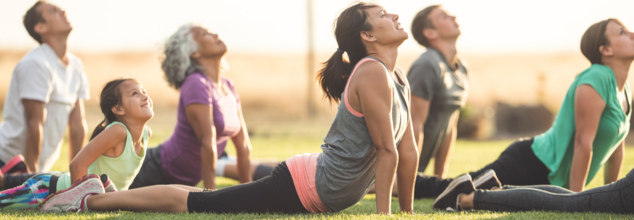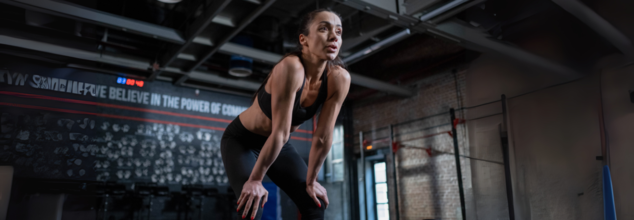- Health Conditions A-Z
- Health & Wellness
- Nutrition
- Fitness
- Health News
- Ayurveda
- Videos
- Medicine A-Z
- Parenting
- Web Stories
Couch Potatoes Beware! Sitting For Hours Might Cancel Out Your Exercise Efforts

Couch Potatoes Beware! Sitting For Hours Might Cancel Out Your Exercise Efforts
"It started with a simple habit," Rina thought as she reclined on her couch, scrolling through her phone. Hours would slip by, spent binge-watching her favorite shows or working remotely from the comfort of her sofa. But it wasn’t until her yearly health check-up revealed alarming cholesterol levels and blood pressure spikes that she realized her sedentary lifestyle might be more harmful than she ever imagined."
Rina’s story isn’t unique. Modern lifestyles have made prolonged sitting almost unavoidable, whether at work, commuting, or at home. A new study now adds to the growing evidence that this habit could have dire consequences for heart health, even for those who exercise regularly.
A recent study led by researchers at Massachusetts General Hospital and published in the Journal of the American College of Cardiology highlights a stark reality: spending more than 10.6 hours a day sitting, reclining, or lying down significantly increases the risk of heart failure and cardiovascular death. This threshold marks a point where sedentary behavior begins to override even the recommended 150 minutes of weekly exercise.
“Our findings support cutting back on sedentary time to reduce cardiovascular risk, with 10.6 hours a day marking a potentially key threshold tied to higher heart failure and cardiovascular mortality,” explained Dr Shaan Khurshid, co-senior researcher and cardiologist.
The study drew data from nearly 90,000 participants in the U.K. Biobank research project, with an average sedentary time of 9.4 hours daily. Over an eight-year follow-up period, the risks became increasingly evident:
- 5% of participants developed an irregular heartbeat.
- 2% experienced heart failure.
- Nearly 2% suffered heart attacks.
- About 1% died of heart-related conditions.
The research revealed a direct link between increased sedentary time and worsening heart health, even for those who adhered to daily exercise guidelines.
How Sitting is a Silent Killer?
Extended sedentary periods contribute to multiple health issues. Sitting slows metabolism, reduces blood circulation, and fosters conditions such as obesity, high cholesterol, and inflammation—all precursors to heart problems. Recent studies, including one published in PLOS One, suggest that prolonged sitting can even accelerate heart aging.
Dr Charles Eaton from Brown University emphasized that many people underestimate how much time they spend sitting and overestimate their physical activity levels. “Replacing just 30 minutes of sitting time each day with any type of physical activity can lower heart health risks,” he noted.
How Small Changes Make Big Impact on Health
Reducing sedentary time doesn’t mean drastic changes—it’s about building healthier habits into daily routines. The study noted:
- Replacing 30 minutes of sitting with light activity reduced heart failure risk by 6% and heart-related death by 9%.
- Adding moderate-to-vigorous physical activity lowered heart failure risk by 15% and heart-related death by 10%.
Simple Strategies to Get Moving
Here are practical tips to reduce sedentary behavior:
1. Every hour, stand, stretch, or walk for 5 minutes.
2. Walk or cycle to work, or park farther away.
3. Walk around while talking.
4. Alternate between sitting and standing while working.
5. Dancing, gardening, or yoga can break long sitting periods.
For Rina, these small changes made a world of difference. She began standing while working, taking short walks between meetings, and embracing a more active lifestyle. Within months, her health metrics improved, and she felt more energetic.
The message is clear: Sitting is not as harmless as it seems. With every additional hour spent sedentary, the risks multiply. Incorporating small, consistent actions into daily life can protect heart health and promote longevity. It’s time to get off the couch—your heart will thank you for it.
Making This Small Change While Walking Could Strengthen And Counter Frailty In Seniors

(Credit-Canva)
Walking is the best activity a person can do, especially for elderly people. Not only is it adaptable but cost effective and something people can do according to their own needs. It is said to be the best exercise for the elderly, but how can you maximize walking to reap all the benefits? A new study found that making this small change in the way you walk can make all the difference in the world
Adding a little more energy to their steps can significantly improve the health and independence of older adults, according to a new study. Researchers found that seniors who slightly increased how fast they walked saw big improvements in their physical abilities.
Just a Few More Steps Make a Big Difference
The study, recently shared in a science journal, showed that taking just 14 or more extra steps each minute made a real impact. One of the lead researchers explained that even just casual walking had good effects on the people in their study.
For the research, the team worked with 102 older individuals. They were about 79 years old on average and lived in retirement homes near Chicago. All of them were either frail or close to being frail. Some were simply asked to walk regularly at a relaxed speed, while others joined a program focused on walking faster. The faster walkers were encouraged to move "as fast as they safely could."
Overall, the seniors in the faster walking group increased their speed to about 100 steps per minute, while those walking casually averaged around 77 steps per minute. The results clearly showed that seniors performed better on a six-minute walking test if they increased their usual walking speed by just 14 steps per minute.
Real-World Impact of Improved Walking
These kinds of improvements can mean a huge amount to someone who is struggling with frailty. As one of the researchers pointed out, people who haven't experienced being frail might not understand how much of a difference it makes to be able to go to the grocery store without getting tired, or not needing to sit down when they're out. Being able to do everyday tasks without feeling exhausted can greatly improve an older person's daily life and help them remain independent.
Tools to Help You Get Started
Because of these good findings, the research team created a smartphone app called "Walk Test." This app can accurately measure how fast someone is walking. The app was designed to be easy for older adults to use without needing any extra equipment. The researchers noted that those who need the most help often have the fewest tools to get started, which is why they made the app simple to use.
The main researcher suggests that seniors first find out their normal walking pace to know where they're starting. Then, they should try to walk a bit faster, finding a speed that feels quicker but is still comfortable. Phone apps with a metronome (which makes a steady beat) can also help. Seniors can try to match their steps to this beat, helping them keep a steady, faster pace.
Broad Benefits of Activity
Walking briskly offers many other health benefits for seniors, as another researcher, a professor of kinesiology, pointed out. Experts suggest physical activity has widespread benefits for many parts of the body. It helps people live longer and lowers the risk for many common long-term illnesses like various cancers, heart disease, and diabetes.
It also improves brain health, makes thinking clearer, and reduces the risk for Alzheimer's disease and similar memory problems. Plus, it boosts mental health by reducing anxiety and sadness, and makes bones stronger. The most noticeable short-term benefits usually include feeling more pleasant and refreshed, sleeping better, and thinking more clearly.
10 Minute Warm-Up Yoga Poses That You Should Do Every Morning

(Credit-Canva)
“My 5-9 before my 9-5” has been a popular trend on social media. We see people waking up at the crack of dawn, going to work out, eat healthy and get their affairs in order before they start their workday. Although it is very admirable to see and inspiring, many of us struggle to find the time or motivation for intense workouts. Not only does it feel overwhelming but also unachievable. However, fitness and health are not just a one-way path; you can begin from anywhere and whichever way you are comfortable doing your exercises. Many chose to start with yoga.
Beginning your morning with a short yoga session is a fantastic way to ease into your day. Unlike high-impact exercises, yoga gently wakes up your body and mind. It helps you feel calm and centered, clearing out any lingering grogginess or stress from the night before.
This peaceful start allows you to connect with your breath and body, setting a wonderfully positive and mindful tone for the hours ahead. It's a quiet moment just for you, helping you approach your day with greater clarity and a more positive outlook.
Why is it Important To Stretch Every Morning?
Stretching in the morning is important because it gently wakes up your muscles and joints after a long night of rest. It helps to improve your flexibility and increase blood flow to your muscles, making them feel less stiff and more ready for the day's activities. A good morning stretch can also reduce tension and boost your energy, setting a positive tone for the entire day.
Cat-Cow Pose
Start on hands and knees. Breathe in, drop your belly and lift your chest like a cow. Breathe out, round your back and tuck your chin like a cat. This gently warms your spine and connects your breath to movement.
Downward-Facing Dog
From hands and knees, lift your hips high, making an upside-down 'V' shape. Spread your fingers wide and press your hands down. This pose stretches your whole body, including your legs and shoulders, and makes you feel energized.
Low Lunge
Step one foot forward between your hands, lowering your back knee. Keep your hands down or lift them up. This pose deeply stretches the front of your hips and thighs, and helps improve your balance. Remember to switch legs.
Child's Pose
Kneel with big toes touching and knees wide apart. Sit your hips back towards your heels and fold forward, resting your forehead. You can stretch your arms forward or beside you. This calms your mind and stretches your hips and ankles.
Seated Spinal Twist
Sit tall with legs out. Bend one knee and place that foot outside the other knee. Twist your body gently towards the bent knee. This pose makes your spine more flexible and helps with internal organ health. Don't forget to do both sides.
Cobra Pose
Lie on your stomach with hands under your shoulders. Gently lift your head and chest using your back muscles, keeping elbows close. This strengthens your back and stretches your belly, also helping with mild back discomfort.
Bridge Pose
Lie on your back with bent knees, feet flat and hip-width apart. Push into your feet and arms to lift your hips toward the ceiling. You can clasp hands underneath your back. This strengthens your back and glutes while gently stretching your chest.
Supine Spinal Twist
Lie on your back and hug both knees to your chest. Let your knees gently fall to one side, keeping your opposite shoulder down. Look the other way. This releases tension in your lower back and hips, promoting overall relaxation.
How Much Sleep Do You Need For Muscle Recovery?

(Credit-Canva)
Getting enough good sleep is super important for anyone who exercises regularly or is on a training program. Think of it as a secret weapon for your body! It helps your muscles get better, makes them less sore, and prepares them for your next workout. You might focus on stretching, drinking water, or eating right, but sleep is actually one of the most powerful tools you have. It's often forgotten, but it truly helps you build stronger muscles and improve how long you can keep going during exercise.
How Much Sleep Do You Need?
According to the John Hopkins University most adults should try to get seven to nine hours of sleep every single night. If you're an athlete, work out often, or train really hard, you might need even more than this. That extra sleep helps your body recover fully and allows you to perform at your best.
- How hard and how often you train
- The type of exercise you do
- Your age
- How stressed you are
- What you eat
- How fit you already are
- Your general health
How Sleep Helps Your Muscles Heal
Even though muscle recovery starts the moment your workout ends, sleep plays a really important part in fixing and rebuilding your muscles. When you exercise, especially intensely, your muscle fibers get tiny, tiny tears. These small tears need to be repaired so your muscles can grow bigger and stronger.
While you're asleep, your body goes into a special "repair mode." It works to heal and rebuild those muscles you've used. Here's exactly how good sleep helps your muscles bounce back:
Boosts Growth Hormone
When you're in deep sleep, your body releases growth hormone (GH). Think of GH as a special helper that fixes and grows your muscles. It also tells your body to make other important helpers for muscle recovery.
Aids Protein Building
Your body uses protein from your food to build new muscle. This process is called protein synthesis. Sleep helps this work well. If you don't sleep enough, your body won't be as good at building muscle after a workout. Eating some protein before bed might even help build more muscle while you sleep!
Restores Energy
Your muscles store energy as sugar called glycogen. Exercise uses up this energy. While you sleep, your body refills these energy tanks by turning food into glycogen. This gets your muscles ready for your next workout.
Controls Swelling
Working out can make your muscles a bit swollen. This swelling is part of healing, but it also causes that sore feeling. When you sleep, your body releases chemicals that reduce this swelling and clear out waste. Good sleep helps you recover faster and feel less sore.
Reduces Muscle Tension
As you fall into deeper sleep, your muscles slowly relax. This relaxation helps your muscles release all the tightness from daily activities and exercise. This deep relaxation is a big part of your overall muscle recovery.
Improves Focus and Coordination
Good sleep also helps your brain! It makes you think clearer, decide faster, and react quicker. These are all important for safe and effective workouts. When you're rested, you'll be more motivated, stick to your plan, and use proper form, which helps prevent injuries.
© 2024 Bennett, Coleman & Company Limited

